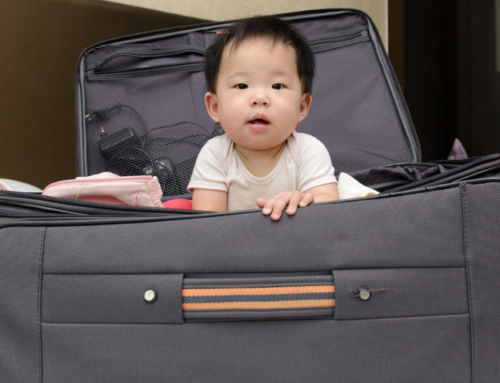Helping your child overcome their fear of the dark is simpler than you might think.
Fear of the dark is common in children, from toddlerhood and on, and is usually spurred on by the development of their imagination. In many it resolves, but for others it can become a persistent fear. They may avoid the dark at all costs, and it is that avoidance which feeds the fear.
Your child’s fear of the dark may result in them being scared of shadows or monsters. They may avoid dark rooms, even in the day, unless accompanied by an adult. They may require an adult to stay with them while they fall asleep at night. Or their fears may wake them throughout the night.
To address the fear a behaviour modification procedure, gradual exposure, can be used. It involves slowly exposing your child to their fears in a prescriptive way (detailed below), along with plenty of praise and other reinforcement. This creates a safe (and no-cry) space for children to be exposed to their fear in small increments. The procedure will empower your child to face their fears and through it they’ll learn that courage is doing it scared.
Let’s dive into the 4 steps to help your child to overcome their fear of the dark.
Step 1: Identify your goal
The first step is to identify your goal – what would you like your child to achieve? The goal shouldn’t be to rid your child of their fear. It needs to be something tangible, like ‘I want my child to be able to go into dark rooms alone without an adult’.
Step 2: Prepare
When helping kids to overcome their fear of the dark, preparation is key.
2a. Validate and discuss their fear with them
Ignoring your child’s fear, by not saying anything about it, or dismissing it by telling them that they are fine, won’t make it go away. Let your child know that you’ve noticed how they avoid the dark and that fear of the dark is normal.
It can help to read Renée Treml’s book Sleep Tight, Platypup. Reading this can open up a conversation around why things seem scary in the dark, and how our imagination can trick us into thinking and seeing things. If you haven’t done so, you can read my full review of Renée’s book here.
2b. Explain how fear works
It is also important to explain to them that when we avoid things we are afraid of, it makes the fear grow bigger. When we face our fear, it gets smaller. A great way to help kids understand this is to demonstrate it visually with a balloon. The air in the balloon is the fear. When we avoid the fear it grows bigger (blow up the balloon). When we face our fear, it grows smaller (deflate the balloon).
Watch my video below for a demonstration of the balloon fear analogy.
2c. Create a fear hierarchy together
Next you are going to want to talk to your child about the situations that they are afraid of. Through this discussion you’ll be creating a fear hierarchy with them. For this you need a pen and paper and you are going to write down at least 10 situations in the dark that are scary for them, starting with the least scary and working up to the most scary.
To help kids understand this I like to draw a ladder with at least 10 rungs, and place each of their identified scary situations on each rung, with the least scary situation on the lowest ladder rung working up to the most scary on the top rung.

Then you are going to rate each situation with something called the subjective units of distress scale or SUDS. It might sound complicated, but it is easy to do. Rate each scary situation in increments of 10, starting with 10 being the least scary fear, or the lowest rung on the ladder, all the way to 100 (being the most scary fear, the top rung of the ladder).
The gradual exposure will involve slowly moving up each rung of the ladder starting with the least scary situation to the most scary. It is important that each situation is not a big jump in fear – we want them to be slowly exposed to their fear without feeling overwhelmed.
Explain to your child that they are going to move up the ladder slowly. Starting with the situation that is least feared, they will do that activity and stay in it for 7 minutes. Let them know that they can stop the activity at any time, that they get to decide when they are ready to move up to the next ladder rung and that they can choose a prize after they complete each ladder rung.
If you have a younger child who is not able to identify the feared situations you may wish to create the ladder for them.
I don’t recommend undertaking the gradual exposure up the fear hierarchy without discussing it with your child, no matter their age. They need to agree to undertake it. Therefore, it will be important to explain to them the benefits – both for them and you – of undertaking it.
Below you can see a sample fear hierarchy. You can see a number of steps involving other family members doing the activity with the child and that there is a gradual progression to the child undertaking the activity alone. The final rung of the ladder – their most feared activity – must be done alone.
It is important that the hierarchy is age appropriate as they need to stay in each feared situation for 7 minutes, and do many of the activities alone.

Some really great hierarchy ideas for children, especially young children, are:
- Night walks together, at different levels of darkness
- Playing shadow games at bedtime (note – you may also need to sit with them in their dark room and identify and potentially remove the items that are creating disturbing shadows at bedtime)
- Gradually dimming the lights at each bedtime
- Come up with a lights on / lights off game
- Come up with creative uses of glow sticks or nightlights that project stars, and incorporate them into the hierarchy
- Use a black light for one of the levels, for glow fun while alone (don’t forget to dress them in white for this one, and maybe pop on some music!).
2d. Discuss coping mechanisms
Teaching your child to turn on the light before entering a dark room can really empower them. For little one’s who can’t reach the light switch there are some innovative products on the market designed to make them accessible. If you google ‘light switch extenders for kids’ a number will come up.
2e. Prepare to reinforce their success
Your child is going to need some encouragement to enable them to complete the gradual exposure. Some things I’d recommend you prepare:
- Solicit social support. It helps if other family members get involved and can cheer your child on as they move up the ladder.
- Get ready to provide lots of praise.
- Create a prize box and have little inexpensive prizes that your child can choose from after completing each level of the fear hierarchy. Older children may wish to choose their own prizes.
- You may wish to also begin planning for a party after they complete the gradual exposure – a glow in the dark party might be fitting!
Step 3: Intervention
Now it’s your child’s time to shine. Have the social support and prizes ready, it’s time to climb the ladder!
Because many of the situations will be scary for your child, I recommend that prior to your child undertaking a situation you do it first – the whole seven minutes – to model it for them. Just ensure you remain calm throughout so they can see how to approach the dark.
Then it is their turn. One ladder rung at a time, starting with the situation that is least feared and staying in it for seven minutes. They may need to stop and come back to it and try again. They may need to repeat it a number of times, across multiple days. They should only move up a ladder rung when they feel comfortable and are ready to move on. Ideally, this should be when their anxiety or distress level has dropped to about half. Here are some ways to help you determine if their distress has dropped to about half:
- Observe how they are behaving
- Ask them to tell you how they are feeling on a scale of 0 to 100 just as they go into the activity, and again at the end of the 7 minutes. For younger children who don’t understand numbers, you could use colours – green (not too scary), yellow (a bit scary) orange (a bit more scary than yellow) and red (very scary).
At each ladder rung they need to stay in the feared situation for 7 minutes. In these 7 minutes they are feeling their fear and staying in it long enough to feel it drop down. They’ll learn that they can feel fear and survive.
When they complete each ladder rung and are ready to move up now’s the time to celebrate with plenty of praise and letting them choose a prize from the prize box. When they complete their most feared situation, try capturing it on video or take a photo of them. You may need it for the next step.
Watch my video describing gradual exposure to help your child overcome their fear of the dark.
Step 4: Maintenance
Practice makes perfect and your child will need to continue to be exposed to the dark, to continue to challenge themselves, to ensure they don’t fall back into their avoidance behaviour. Every day ensure you are asking them to do at least one thing that involves them approaching the dark. For example, if they need to brush their teeth in the dark bathroom, ask them to please go in and brush their teeth, and let them do it alone.
If your child still needs a light source to go to sleep that is ok. Just keep in mind that light at night can interfere with sleep by reducing melatonin, our sleepy hormone. To prevent interference with sleep, look for night lights or lamps that only emit red light or a dim amber light, or allow you to change to bulbs that don’t emit blue light.
If your child shows hesitancy towards the dark you may need to remind them of a coping mechanism such as turning the light on. You can also whip out your video or photo of their achievement to remind them. If they do begin to refuse to enter a dark room ask them if they’d like to challenge themselves, and have a little reward – this could be a sticker or $1 – if they do take the challenge. If they don’t want to challenge themselves maybe they will the next time, so keep asking! Offer to sing or talk to them while they go turn on the light – this might help them to know you are close.
Fear of the dark is common in children. By undertaking the gradual exposure and maintenance steps you’ll empower your child to face their fears, which is an important life lesson. From it they’ll gain confidence and understanding that many things in life will scare us – true courage is doing it scared.
If you need some help with your child’s fear of the dark please don’t hesitate to reach out. Please note that I am not a psychologist. I am a psychology student, undertaking a Graduate Diploma in Psychology. I completed a successful intervention project for my six-year-old daughter’s fear of the dark using the methods discussed above.






Leave A Comment